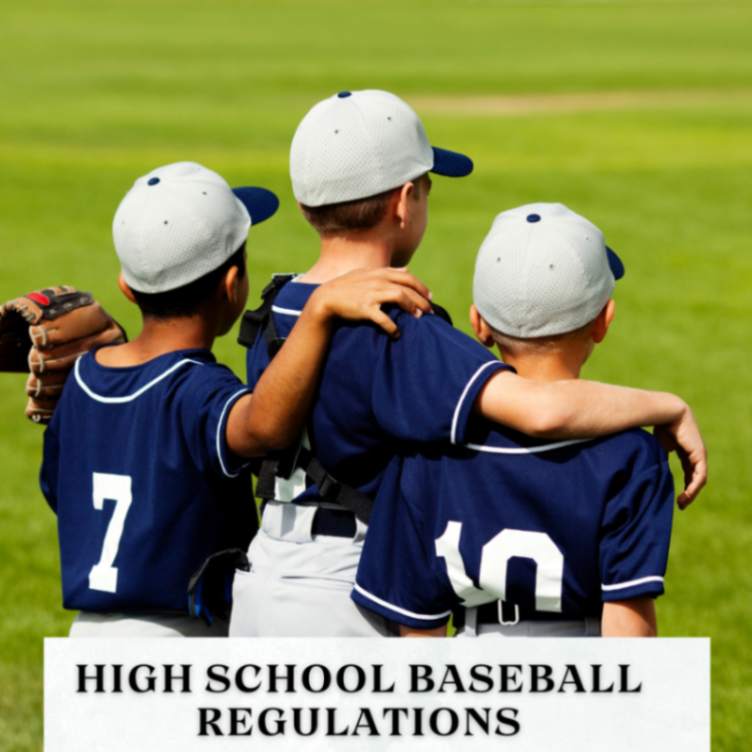
Understanding High School Baseball Durations
Imagine the scene the stands filled with eager faces, the game teetering on a knife edge, and the fading daylight casting a golden hue over the field. Its a classic endgame scenario in high school baseball, with fans and players alike caught in the suspense.
Everyone asking, How long do high school baseball games last? The question is more than just idle curiosity, it touches the heart of the sport’s charm. Every second is steeped in anticipation, with the potential to sway the game’s outcome.
In this article, we delve into the elements that define the length of a high school baseball game. It’s a mix of rules, play strategies, and the sheer unpredictability of sports that dictate whether a game will be a swift affair or a drawn out drama. So, let’s break down these components, giving fans, players, and coaches alike the knowledge they need to navigate the timeline of a typical high school baseball game.
The Countdown Begins Setting the Stage for Game Length
As the first pitch is thrown, the countdown begins. Players are poised, coaches are strategizing, and fans are calculating the innings, trying to predict the length of the game. How many innings in high school baseball? is not just a question it’s a variable that can change from game to game, shaped by the ebb and flow of each inning.
In high school baseball, the scheduled seven innings set the standard, but the actual time it takes to complete these innings can vary. Baseball how many innings Factors such as the pitchers duel, the batters resilience, and the defense’s sharpness all play a critical role.
Here, we’ll explore what these factors entail and how they come together to determine the length of the game, ensuring fans know just how much time they’ll spend in the grip of the game’s thrills.
The Final Stretch When Will the Last Out Be?
As the game progresses, the question lingers, How many innings in baseball high school? By the seventh inning, some games may be winding down, while others might just be heating up, heading into extra innings.
High school baseball innings this is where high school baseball shows its true colors, revealing a narrative that can be as unpredictable as the sport itself.
The tension mounts not just for the players on the field but also for those watching. Will there be a climactic finish, or will the game test the endurance of everyone involved? Understanding the various scenarios that can extend a high school baseball game is key to appreciating the sport’s depth and excitement. let’s take a closer look at the final stretch of the game and what it entails for everyone waiting for that final, decisive out.
Decoding Game Length The Role of Pitchers and Defense
When pondering how many innings are in high school baseball?, one must consider the pivotal role of pitchers and defense. These elements are like the hands of a clock, dictating the pace of the game. A pitcher who delivers quickly can keep the innings brief, while a defensive squad that snaps up outs with precision can prevent the game from dragging on.
Conversely, a pitcher who takes their time or a defense that struggles can lead to longer innings and a more prolonged game experience. This dynamic is crucial to grasp for anyone looking to understand the true length of a high school baseball game.
Through this lens, we’ll examine how the efficiency and style of both pitchers and defense teams directly impact game duration.
On the Offensive Strategies That Shape Game Time
The offensive side of high school baseball is a chess game, with each move capable of affecting how many innings are in a baseball game. Strategies like bunts and steals, along with batters who work the count, can extend the game significantly. Each at bat is a building block of the game’s overall length, with the potential to stretch out the innings.
Understanding how these offensive tactics play out is essential for those curious about the factors that contribute to the duration of a high school baseball game. We’ll delve deep into the offensive playbook to uncover how strategic plays and smart batting can add layers of time to the clock, keeping fans engaged and on the edge of their seats for longer.
The Unpredictable Delay Weather and Other Interruptions
If you’ve ever asked, how many innings is high school baseball?, you know that unpredictable factors like weather and delays can throw a wrench into any estimates. A sudden storm can halt play, while other delays, such as equipment malfunctions or on field discussions, can cause unexpected extensions to the game’s length.
These interruptions are the wild cards that can turn a quick game into a lengthy endeavor. For anyone invested in the timeline of high school baseball, acknowledging the influence of these uncontrollable elements is paramount.
This section will explore the impact of weather and other delays on the game, providing insights into how they can alter the expected duration of high school baseball games. In this context, understanding the significance of crooked numbers in baseball becomes crucial, as they can often lead to extended innings and unexpected turns in the game’s progression.

Unveiling the Game Clock High School Baseball Regulations
When it comes to high school sports, one might wonder, how many innings are there in a baseball game? Well, the answer starts with the core regulations. These rules are the foundation upon which the game is built, much like the base of a pyramid. They dictate everything from the official number of innings to when a game might be considered complete or called off.
Players, coaches, and fans must understand these guidelines as they set the pace and rhythm of the game. In this section, we’ll take a closer look at the regulations that govern the timing of high school baseball, ensuring that everyone from the rookie player to the seasoned spectator is well informed about the framework of the game’s length.
Inning by Inning Breaking Down Game Duration
Diving deeper into the question, how many innings does high school baseball play? brings us to the heart of the matter — the innings. Just as chapters are to a novel, innings are to a baseball game. They’re the segments that collectively make up the whole experience, each with its narrative and timeframe.
Some innings zip by in a flash, others unfold slowly as teams battle it out on the field. The length of an inning can vary greatly, influenced by the strategies employed and the events that unfold
. This section will explore the ins and outs of innings, providing clarity on how these crucial segments of the game contribute to its overall duration. The analysis of baseball uniforms and their designs can also play a subtle role in the players’ performance and, by extension, the length of the innings.
Comparing Diamonds High School vs Professional Baseball Timelines
In seeking to understand how many inning in baseball game? it’s enlightening to compare them to their professional counterparts. While both share the essence of the sport, the two levels play out on quite different scales. High school games tend to be shorter, generally due to fewer innings and different pacing.
However, it’s not just about duration but also the atmosphere and intensity unique to high school baseball. This section will contrast the timelines of high school and professional baseball games, shedding light on what fans and players can expect when they step out onto the high school diamond versus watching the pros.
Understanding the Clock The Average Duration of High School Baseball Games
A common query that arises among fans and participants alike is, How many innings in his baseball? To provide a clear answer, we look at the average game length. This isn’t just about a start and end time, it’s about setting the scene for what to expect when you step onto the field or settle into the stands. In this piece, we’ll unveil the typical duration of these games, giving everyone a solid baseline.
Whether you’re a player pacing yourself for the game, a coach planning your strategies, or a fan figuring out your day, these numbers are invaluable. We’ll sift through the stats to give you a comprehensive view of the average length of high school baseball games, painting a picture of the time commitment involved in this beloved sport.
Numbers Tell the Tale Interpreting High School Baseball Game Lengths
Digging deeper than the question, How many innings in a high school baseball game? leads us to the narratives spun by statistics. These numbers do more than quantify, they enlighten us on the flow and tempo of the game. In this analysis, we’re not just recounting figures we’re interpreting what they reveal about the nature of high school baseball.
From the influence of game day strategies to the impact of player skill levels, we’ll decipher what the duration statistics tell us about the sport. This section is dedicated to exploring the factors behind the numbers. This provides insights into why high school baseball games last as long as they do, and what influences this timeframe.
The Games Duration Its Impact on the High School Baseball Community
In the high school baseball scene, one of the most talked about aspects is game length. People often ask, how many innings high school baseball? because it’s more than just a question of time it’s about how the game’s length touches the lives of those involved.
In this section, we’ll explore the ripple effects of game duration on the key pillars of high school baseball. We will explore the players, the coaches, and the fans. Understanding the significance of time spent on the diamond provides a deeper appreciation for the sport and all who cherish it.
In the Players Cleats Endurance and Focus on the Field
For the athletes, How many innings do high school baseball play? is a question of physical and mental stamina. Each game is a new chapter in their athletic story, potentially filled with challenges and triumphs. Extended games test their endurance, demanding sustained focus and resilience.
But these lengthy battles also present opportunities for remarkable comebacks and displays of determination. This discussion will delve into the player’s perspective, examining how the length of the game can affect performance, strategy, and ultimately, their growth as athletes.
The Coaches Game Plan Strategy in the Face of Time
Coaches are often the unsung strategists of high school baseball, especially when considering how long their games last. Their planning and in game decisions are heavily influenced by the anticipated length of the game. They need to manage their players’ energy, plot their innings, and make critical calls all with an eye on the clock.
In this section, we’ll innings in high school baseball and investigate the coaching strategies that hinge on the variable nature of game time, offering insights into the intricate dance between managing time and managing a team.
Through the Fan’s Eyes The Spectator Experience Shaped by Time
Lastly, for the enthusiasts cheering from the sidelines, how many inning in high school baseball? translates to planning their support and engagement. The duration of a game can turn a quick match into a memorable day at the park or a lengthy endeavor that tests their patience.
Here, we’ll consider the fan’s experience. We will be reflecting on how the length of the game can enhance their excitement or, sometimes, their endurance. Fans’ perspectives are integral to the sport’s atmosphere. And the time they invest in watching the game is a testament to their passion.
Conclusion
To wrap it up, this article has taken a swing at unraveling the complexities of high school baseball game durations. From the rules that set the stage to the strategies that stretch the clock, we’ve covered the bases to provide a comprehensive view of what goes into the length of a game.
As we close, remember that the time spent on the field is more than just minutes ticking by. It’s a measure of the commitment and passion that players, coaches, and fans bring to the game of baseball. So, step up to the plate, get involved with high school baseball in your community, and enjoy every inning. However long it may last.
FAQ
Q1 What’s the quickest a high school baseball game can end?
When considering how many innings for a game to count, the quickest a game can end is typically around 1.5 hours. This scenario occurs when a team is significantly leading and the opposing team hasn’t scored. If the opposing team hasn’t scored by the middle of the fifth inning, the mercy rule can be invoked.
Q2 How do extra innings affect the length of a high school baseball game?
Extra innings occur if the score remains tied following the regular seven innings. This extension can significantly impact how long do high school baseball games last. This is because the game continues until one team outscores the other at the end of a completed inning.
Q3 Are there time limits or a mercy rule in high school baseball?
High school baseball does include a mercy rule, also known as the run rule, which can shorten games. If one team is ahead by a certain number of runs, typically 10 or more, after a specific number of innings, the game can be called early. This rule helps to manage how long do high school baseball games last.
Q4 How do time outs and injuries influence the duration of the game?
Time outs and injuries can pause the action on the field, adding to the total time. While time outs are usually brief, injuries can lead to longer delays. This depends on the severity and the time needed to safely address the situation.
Q5 Can high school baseball games end in a tie?
Baseball secondary average typically, high school baseball games do not end in a tie. If the score is even at the end of seven innings, the game moves into extra innings. This is done until one team scores more runs than the other after a full inning.



